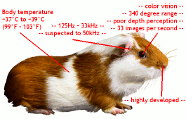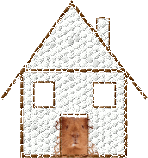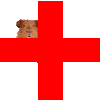If you wish to print this page as a reminder, you can easily do so by hitting CTRL+P.
If you wish to tattoo these instructions on parts of your body, please make sure that you provide adequate space/large enough body parts to prevent some important guinea pig care aspects from breaking apart on several separate limbs, which could lead to confusion and erroneous care.
We do not take responsibility for low quality or misleading tattoos. Do NOT tattoo your guinea pig.

Guinea Pig Care
What You Will Need:
- A guinea pig (preferably at least two!)
- Food and Water
- Cage (Hutch)
- Bedding
- Hiding Place
- Accessories (food bowl, water drip bottle, toys)
- Nail clipper (yours will do fine)
- Guinea Pig Manual (congrats, you’ve got that covered!)

Food and Water Quick Instructions
Your guinea pig needs to eat and drink, unless it is of a stuffed plush species. Provide it with the following:
- Fresh water in a drip bottle. Change the water and clean the bottle on daily basis.
- Unlimited amounts of grass hay, available 24/7. This is not negotiable.
- About 1/4 – 1/8 cup of plain, dye free guinea pig pellets (heavy, ceramic bowl is recommended for serving to prevent tipping).
The boring, grayscale ones are preferred over the funny colorful ones. - Fresh vegetables on daily basis, especially those with high Vitamin C content.
! SAFE vegetables: green leaf lettuce, romaine lettuce, escarole, red leaf lettuce, curly endive, cilantro.
! UNSAFE vegetables: cabbage family, iceberg lettuce, broccoli, cauliflower, beet greens, radishes.
For more concise info about what can guinea pigs eat, please check out the Guinea Pig Eating page.

Environment Quick Instructions
Arranging your pet’s accommodation options
- Cage rule of thumb: the bigger the better.
- Keep the cage inside the house – guinea pigs have very limited temperature fluctuation tolerance, and there is a risk of other animals breaking into the cage and attacking the guinea pig.
- Ensure that your pet has a “floor time” every day, so it can freely walk around on the floor, outside the cage confinements.
- Always keep an eye on your animal to prevent dumb accidents like stepping on, things falling on it, spontaneous combustion, etc.
- As the cavy is a social (herd) animal, it is recommended to acquire two or more cavies of the same gender or spayed/neutered to prevent loneliness and boredom,
especially if the owners are careerist. - EVERY DAY: Remove droppings and uneaten vegetables from the day before. Ensure sufficient amounts of hay and change the water.
- EVERY WEEK: Clean the guinea pig hutch thoroughly. Frequency depends on the bedding type. Don’t use any harsh chemical cleaners.
- In order to avoid injuries or other mishaps, do not house your guinea pigs with other animals (or/and children) or allow them to play together.

Health and Care Quick Instructions
In order for it to live long and prosper (and to achieve guinea pig life expectancy), you need to watch out for your guinea pig health. And care for it adequately to keep it healthy:
- EVERY FEW WEEKS trim the toenails of your cavy (you can do yours more frequently for practicing purposes).
Be cautious! If you clip too close to the blood vessel the toe nail may start to bleed. Use an additional lightning to see clearly what are you trimming. - EVERY FEW MONTHS bath your guinea pig in a clean, warm water. Dry it gently with a cozy cloth and keep it warm until it dries.
- EVERY WEEK weigh your pet to ensure it is not losing weight. Losing weight more than two ounces (~60g) could be a common symptom of illness or dental problems.
- ALWAYS watch for signs of illness. Watch for mites on your guinea pig.
More health info on Guinea Pig Health Page.
